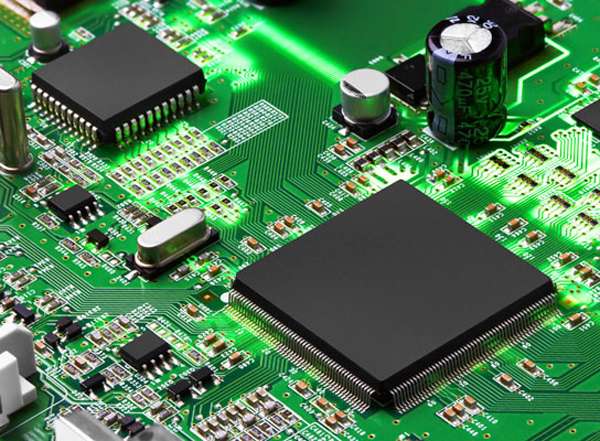Introduction
A transistor is an electronic component whose function is to act as a switch as well as an amplifier. Automatic computations are done through the use of billions of nanoscopic transistors that are contained in computers, phones…etc.
Brief History
The development of transistors was based on a much larger device called a vacuum tube. Referring to the diagram below, a vacuum tube works by first applying a current through the cathode. The cathode will soon heat up, causing some of the electrons to escape the negatively charged cathode to the positively charged anode. As the space inside the container is a vacuum, there is little resistance to the movement of electrons. Once the electrons reach the anode, the current flows through the light bulb, causing it to light up. Now let’s say we apply a positive voltage to the grid. As positive charges attract electrons, they will continue to flow to the anode and the light bulb will remain lit. If however, we apply a negative voltage to the grid, the electrons will no longer be able to flow to the anode, since like charges repel. As a result, no current flows through the lower right circuit, and so the light bulb turns off.
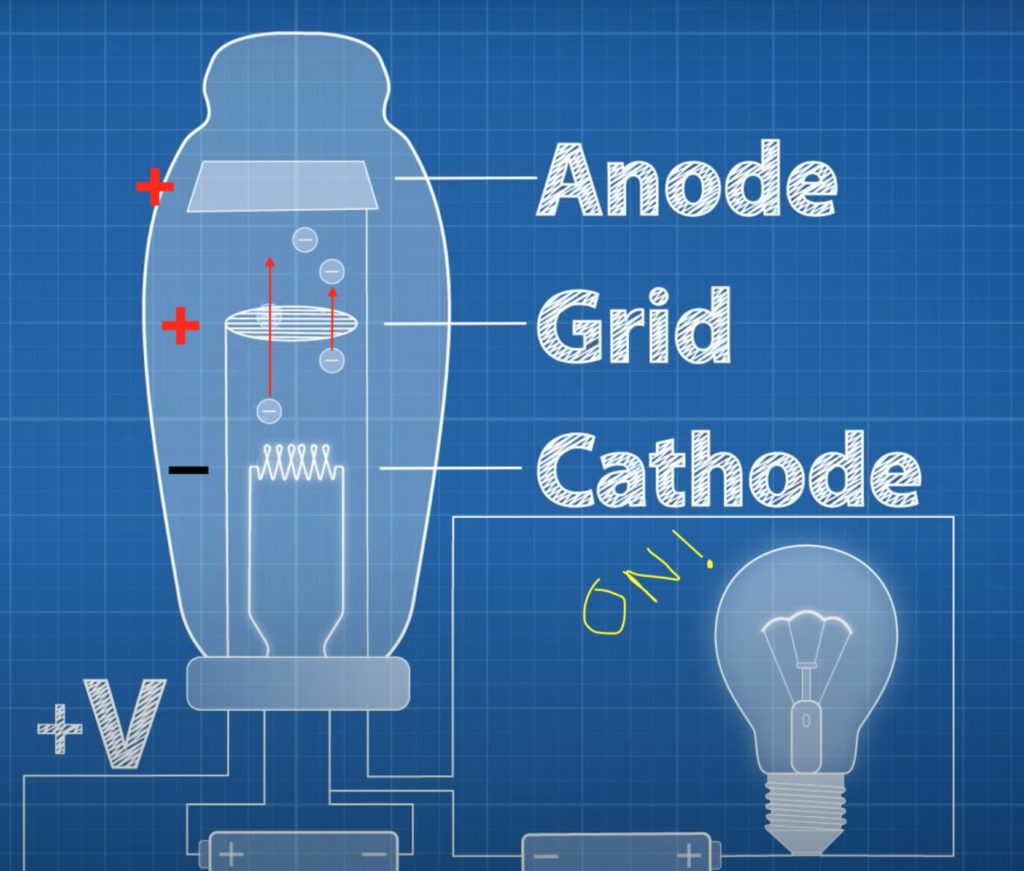
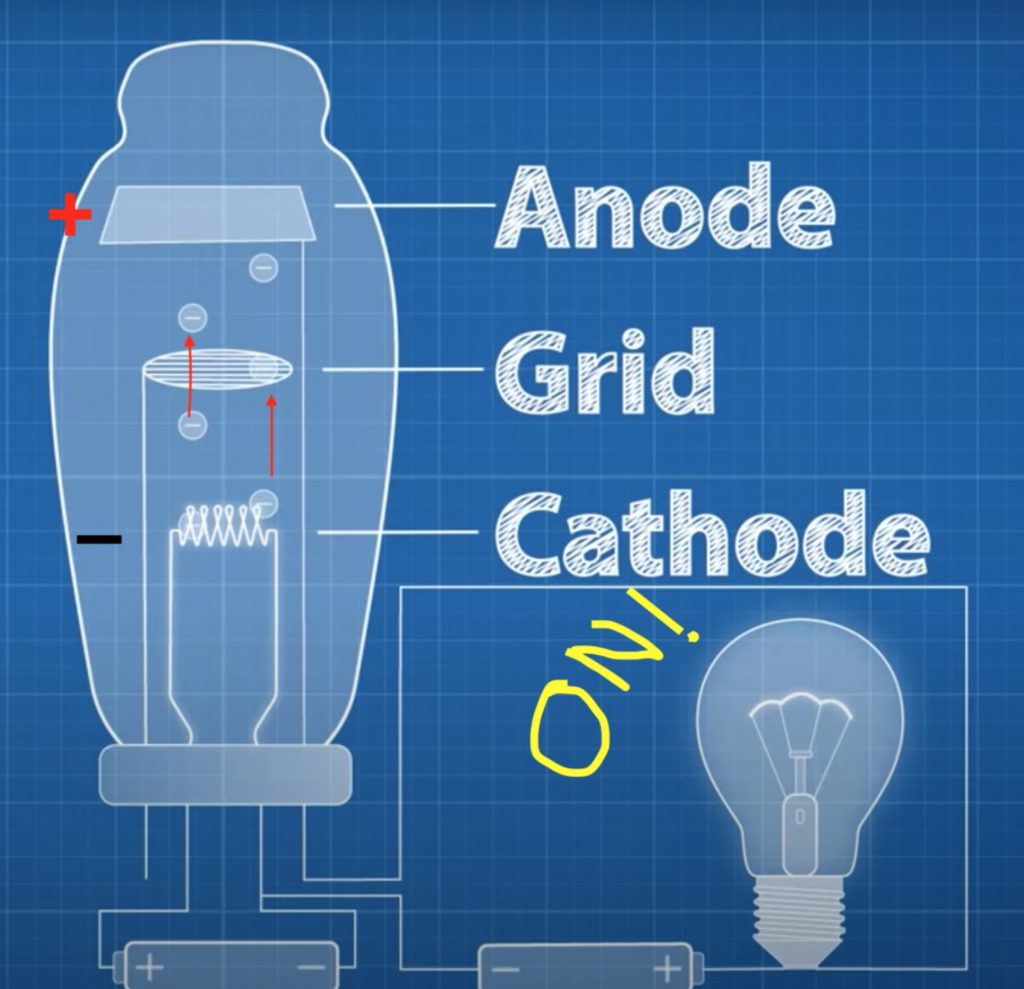
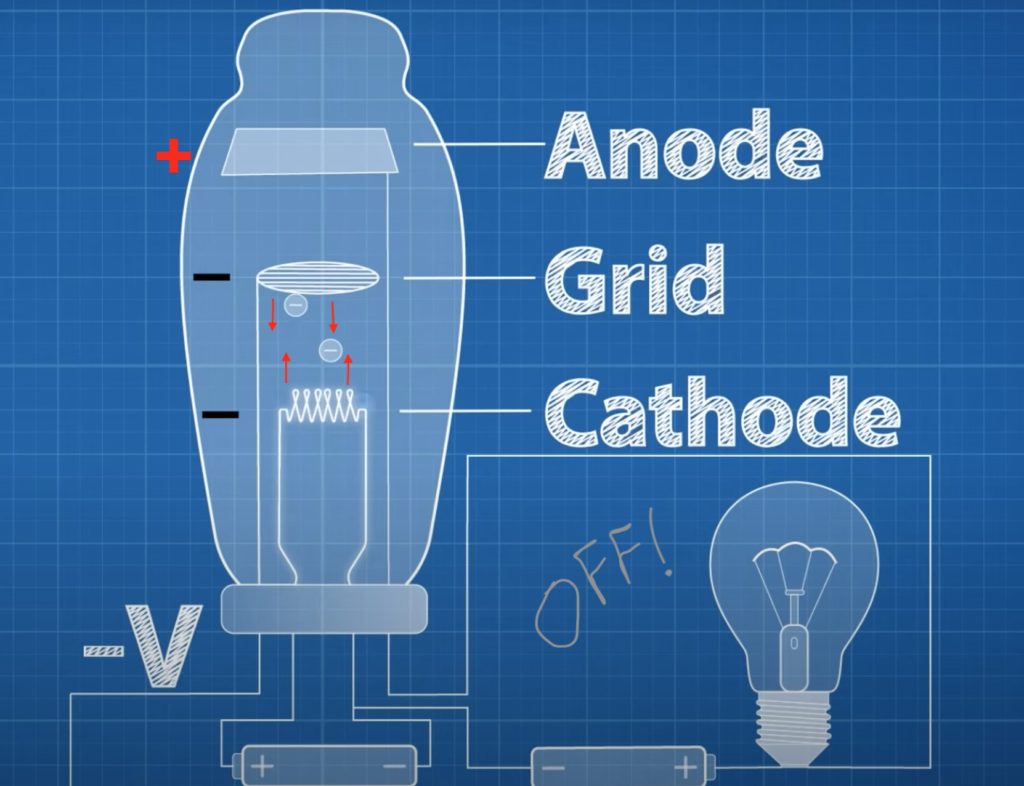
This principle is the foundation of modern day programming; when the light is off, it is a 0 and when the light is on, it is a 1. The first computers that were developed in the 1930s used thousands of vacuum tubes to perform calculations. The invention of these computers allowed calculations that would have taken 24 hours for a human person to do to be done in just 30 minutes. In the mid-20th century, computers were the state of the art technology, but used up a lot of power, as every single cathode had to be heated. In addition, every time a cathode filament burned out (which happened quite frequently), it had to be replaced individually by hand. Furthermore, the non microscopic size of vacuum tubes meant that computers in the early days took up an entire room to operate. Today, a tiny silicon chip containing billions of transistors is able to perform the same tasks as the vacuum tubes did in the mid-20th century. The development of transistors from vacuum tubes allowed computers to be much more portable and therefore gave birth to the age of digital technology that we live in today.
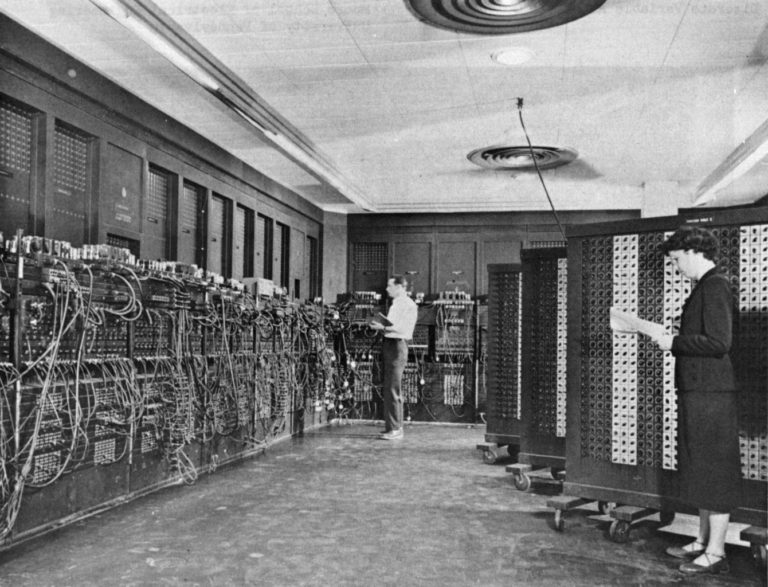
P-type and N-type Semiconductors and Transistors
Silicon is the basic component of transistors. Silicon is a semiconductor, which has properties of being a conductor and an insulator. Referring to some of the basic rules of chemistry, silicon is an element that has four valence electrons in its purest form. Like many other elements, silicon wants its valence shell to be completely filled by gaining four additional electrons. In order to do so, silicon readily bonds with other silicon atoms to share electrons between them – also known as covalent bonding. Silicon in its natural state, therefore, forms a crystalline structure that contains millions of silicon atoms all held together by covalent bonds. The electrons that exist between the silicon nuclei are not able to freely move. Silicon therefore, is unable to conduct electricity in its natural state. Now, suppose that one of the silicon atoms in the crystalline structure is replaced by a phosphorus atom. A phosphorus atom, unlike a silicon atom, has five electrons in its valence shell. This allows the crystalline structure to have one free electron to move freely around the network of silicon atoms. The presence of free electrons allows electricity to conduct through this crystalline structure, and therefore, we have formed an n-type semiconductor.
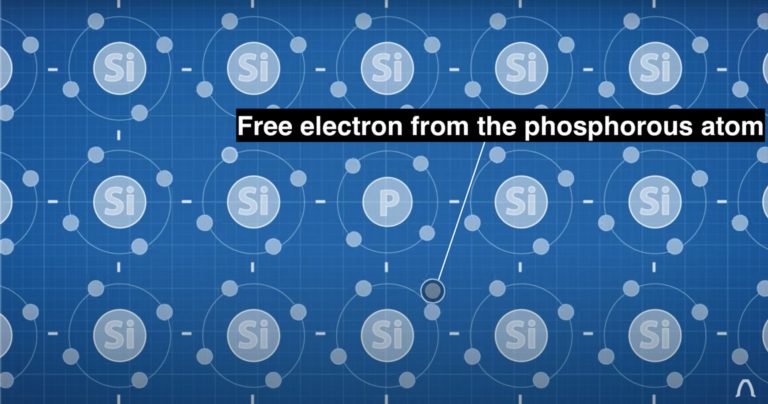
Next, suppose that instead of replacing one of the silicon atoms with a phosphorus atom, we replace it with a boron atom. Boron only has three electrons in its valence shell so we now have a shortage of electrons in the whole network of silicon atoms. Boron will take away one of the electrons from the silicon atom, making a region of mobile charges that are positive (or, in other words, think of the absence of electrons as “holes”). In this case, we have created a p-type semiconductor.
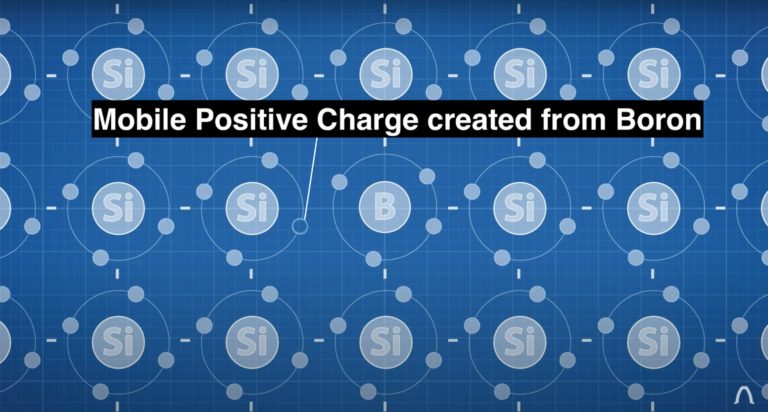
How Transistors Work (Transistors as Switches)
A transistor is commonly made up of one p-type semiconductor in the middle and two n-type semiconductors in either one of its sides. The free electrons in the n-type semiconductors will be attracted to the “holes” in the p-type semiconductor (which are positively charged). The migration of electrons from the n-type semiconductors to the p-type semiconductor will create a boundary called a depletion layer, which prevents additional electrons from flowing into the p-type semiconductor, as the free electrons get repelled by the electrons that have already filled in the holes of the p-type semiconductor.

In this case, no electrons can flow across the semiconductors and therefore, the switch is off. If however, a positive voltage is applied to the base of the transistor, some of the electrons in the p-type semiconductors will get attracted to the positively charged base, which allows the remaining free electrons to flow through the layers of semiconductors, allowing current to flow through the transistor. In this case, the switch of the transistor is on. For this to happen however, the magnitude of the positive voltage must be greater than or equal to the threshold voltage – the minimum voltage required to overcome the depletion layer – in order for current to flow through the transistor. By this mechanic, a whole system of nanoscopic transistors is able to conduct complex tasks in a fraction of a second.
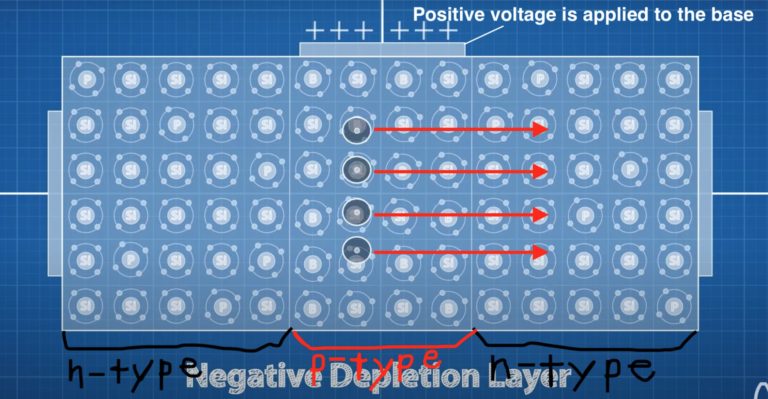
Transistors as Amplifiers
The science behind the use of transistors as amplifiers is a little more complex. But to put it simply, a transistor is able to change (usually increase) the main current flowing through the semiconductors by using a current of different magnitude supplied to its base. In other words, IC, which is the amount of current passing through the semiconductor (also called the collector current), is dependent on the value of IB, the amount of current supplied to the base (also called the base current), proportionally. We therefore get this mathematical relationship where [ IC = k*IB ], where k is some constant that’s usually about 100. In order to understand this concept more easily, let’s say that you have two ammeters – one for measuring the collector current and the other for measuring the base current), as well as a variable resistor in the collector current. A person inside the transistor is looking at the reading of the base current and adjusting the resistance of the variable resistor in order to get the desirable current of the collector current. The reality of course, is more complicated than this, but we will only cover the basics in this article.
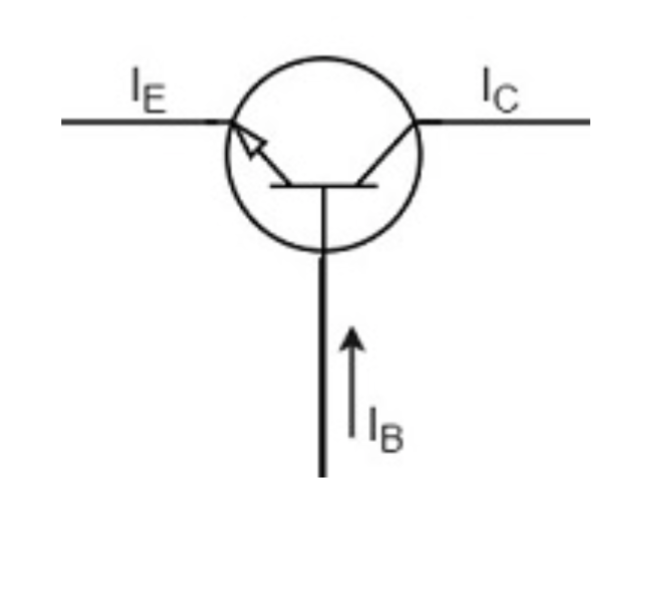
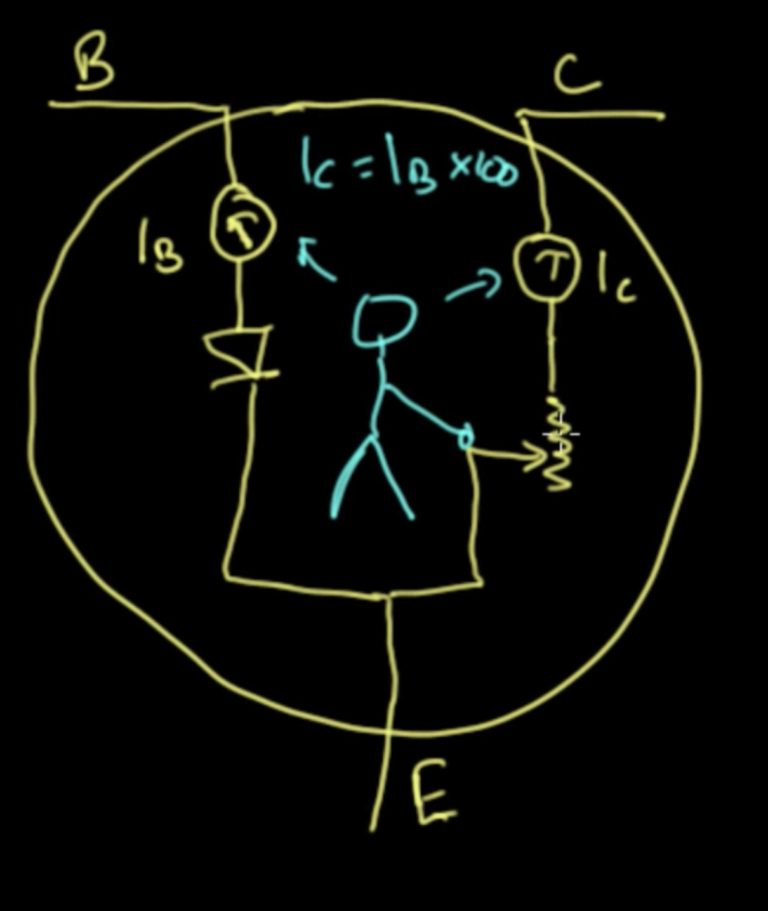
The Future of Transistors
Even though transistors have been used to develop computers for the past 50 years, it seems to be that we are gradually approaching the end of such an era. In 1965, American engineer Gordon Moore created the Moore’s Law, which states that the density of transistors in integrated circuits doubles every two years. The development of transistors has followed this trend for decades – that is, until pretty recent. Over the course of 50 years, inventors have focused on making smaller and smaller transistors. Scientists however, believe that we are gradually reaching the limit of doing so. One reason for this is that, in the past, manufacturers of transistors were able to make additional profit as they created smaller transistors. It turns out however, that below a certain size, manufacturers are no longer able to make additional profit which results in the loss of incentive to make transistors smaller. In addition, a more scientific reason shows that as transistors decrease in size, so does the threshold voltage of the depletion layer as well. It turns out when a transistor is too small, the threshold voltage of their depletion layer is so small that it allows free electrons with enough energy in the n-type semiconductors to flow across the semiconductor without having a positive voltage applied to its base. This phenomenon is called quantum tunneling. This obviously defeats the purpose of a transistor as a switch. Due to the fact that the limitations of the development of transistors has become apparent in recent years, some inventors have changed their focus from developing smaller transistors to relying on quantum mechanics (which can perform calculations faster than any transistor could) as a potential medium for future computers. Others are focused on making a decentralized computing system through the use of physical objects, or “Internet of Things” as it is commonly called. Whatever the case may be, it seems to be that there will definitely be a drastic change in how computers operate in the near future.
[1] Real Engineering. (2016). “Transistors – The Invention That Changed the World”. https://www.youtube.com/watch?v=OwS9aTE2Go4&t=284s&ab_channel=RealEngineering Last Accessed: 6 October 2020.
[2] Learn Engineering. (2016). “Transistors, How do they work?”. https://www.youtube.com/watch?v=7ukDKVHnac4&ab_channel=LearnEngineering Last Accessed: 6 October 2020.
[3] AndrejaKo, et al. (2012). “Basic questions about transistor amplification”. StackExchange. https://electronics.stackexchange.com/questions/24591/basic-questions-about-transistor-amplification Last Accessed: 6 October 2020.
[4] Eater, Ben. (2015). “How a transistor amplifies current | Digital electronics (6 of 10)”. https://www.youtube.com/watch?v=uo2KgRN04XI&t=493s&ab_channel=BenEater Last Accessed: 6 October 2020.
[5] U.S. Army Photo. (2005). “File: Eniac.jpg”. https://commons.wikimedia.org/wiki/File:Eniac.jpg Last Accessed: 6 October 2020.
[6] “Transistor as an Amplifier”. Tutorialspoint. https://www.tutorialspoint.com/amplifiers/transistor_as_an_amplifier.htm Last Accessed: 6 October 2020.
(Thumbnail Image Source) [7] Crain, Jason. (2015). “Squishy transistors–a device concept for fast, low-power electronics”. National Physical Laboratory. https://phys.org/news/2015-09-squishy-transistorsa-device-concept-fast.html Last Accessed: 22 March 2021
